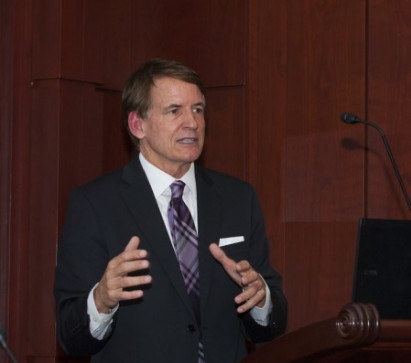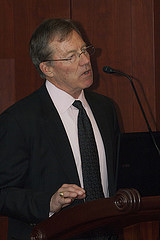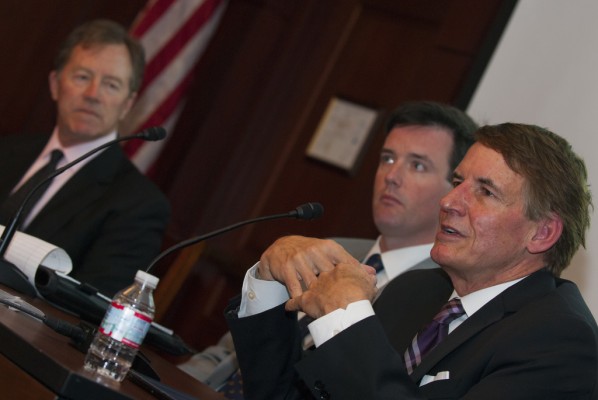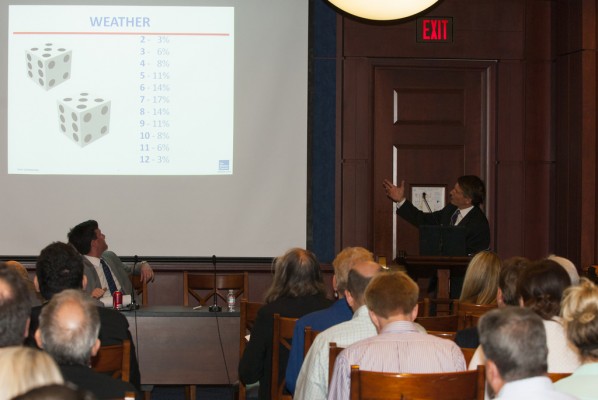
Weather, Climate, and National Security
 On Wednesday April 23rd, the American Security Project, in conjunction with The Weather Channel, hosted an event on the Hill about Weather, Climate, and National Security. The discussion on these issues was led by Mr. Bryan Norcross, Senior Hurricane Specialist for The Weather Channel, and Brigadier General Stephen A. Cheney, USMC (Ret), CEO of ASP. Andrew Holland, ASP’s Senior Fellow for Energy and Climate, introduced the event and moderated the Q&A section.
On Wednesday April 23rd, the American Security Project, in conjunction with The Weather Channel, hosted an event on the Hill about Weather, Climate, and National Security. The discussion on these issues was led by Mr. Bryan Norcross, Senior Hurricane Specialist for The Weather Channel, and Brigadier General Stephen A. Cheney, USMC (Ret), CEO of ASP. Andrew Holland, ASP’s Senior Fellow for Energy and Climate, introduced the event and moderated the Q&A section.
Norcross spoke initially, discussed first how he saw climate change through history. He cited the Medieval Warm Period and the subsequent Little Ice Age. He said though climate change has always naturally cycled, that does not preclude human interference in that cycle. Norcross emphasized that “when humans got into the business of creating factories… the natural warming trend was compounded by human influence” by adding more carbon dioxide to the atmosphere and world.
He continued by discussing the connection between climate change and intense storms like hurricanes. Norcross explained that extreme weather events always occurred, and will always occur, climate change or not. But what climate change does is “load the dice” to increase the likelihood of extreme events. He compared it to a literal roll of the dice. Say you roll two dice. The odds of rolling a 7 are larger than rolling a 12, just by sheer probabilities. In his analogy, rolling a 5, 6, 7, 8, or 9 represents “normal” or average weather, while a 12 is an extreme weather event. With two fair dice, the odds of rolling “normal weather” are 66%, the majority of the time. Once again, this does not preclude extreme weather, only that it is unlikely (2.78% to be exact). Assume one die was replaced with a loaded die. Instead of fair die, with all numbers of 1 through 6, it replaced its number 4 with another 6. While still uncommon, the dice are more likely to roll a 12 than with fair dice. The two dice represent climate, and any individual outcome the weather. In this same manner, human induced climate change “loads the dice,” increasing the probability of extreme events beyond the typical state.
 Cheney followed Norcross explaining how climate change is a national security threat across the globe. For example, the Arab Spring started in large part because rising bread prices “acted as a spark to instability.” Drought exacerbated by climate change was the source for the higher bread prices. Cheney repeated the results of an ASP report showing “70% of the world’s militaries viewed climate change as a threat.” Cheney concluded the presentation stating that while we may be uncertain about certain aspects of climate change, in the military you could not hesitate to act under uncertainty, and that climate change requires strong action in response.
Cheney followed Norcross explaining how climate change is a national security threat across the globe. For example, the Arab Spring started in large part because rising bread prices “acted as a spark to instability.” Drought exacerbated by climate change was the source for the higher bread prices. Cheney repeated the results of an ASP report showing “70% of the world’s militaries viewed climate change as a threat.” Cheney concluded the presentation stating that while we may be uncertain about certain aspects of climate change, in the military you could not hesitate to act under uncertainty, and that climate change requires strong action in response.
To watch the whole presentation, check out the video below and see our Flickr. For more information on what ASP has done on this issue, go to our website, our blog, and be sure to look at our latest report, Ten Key Facts of Climate Change and our follow up posts.






